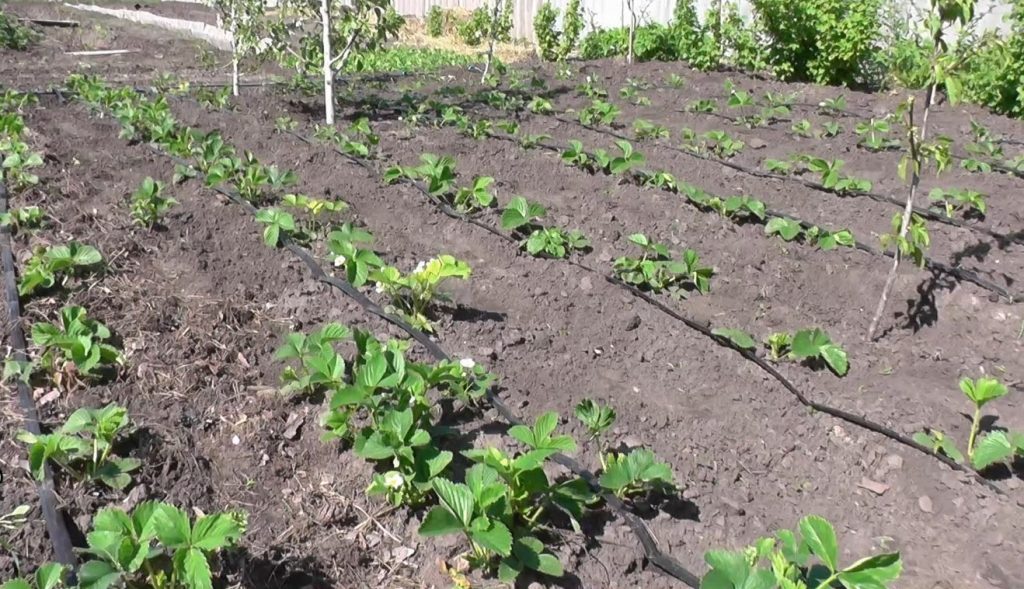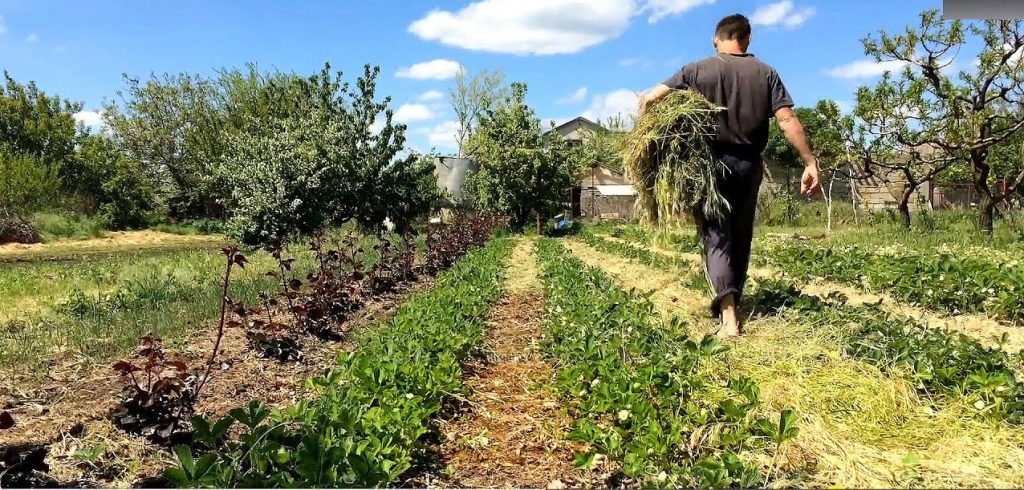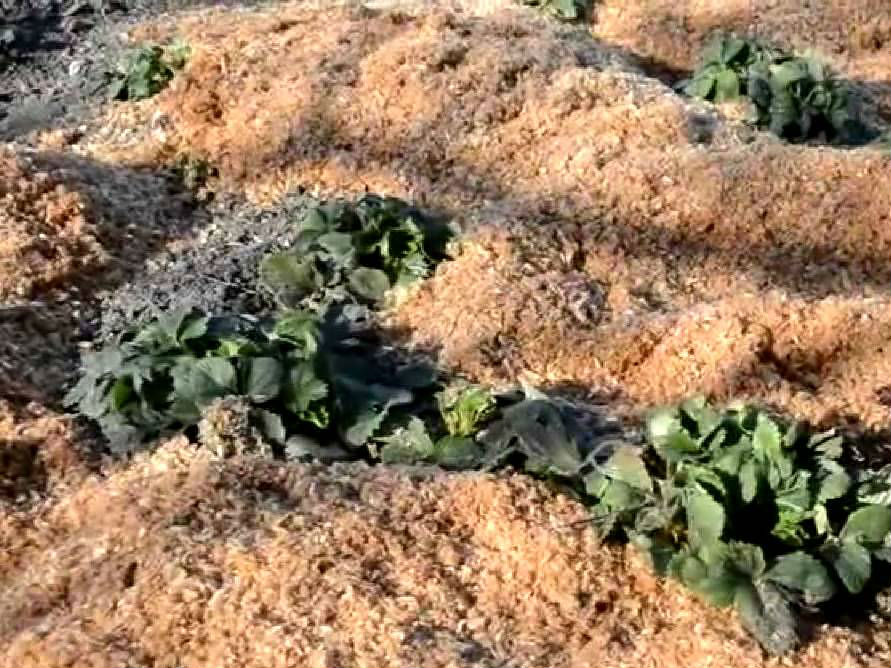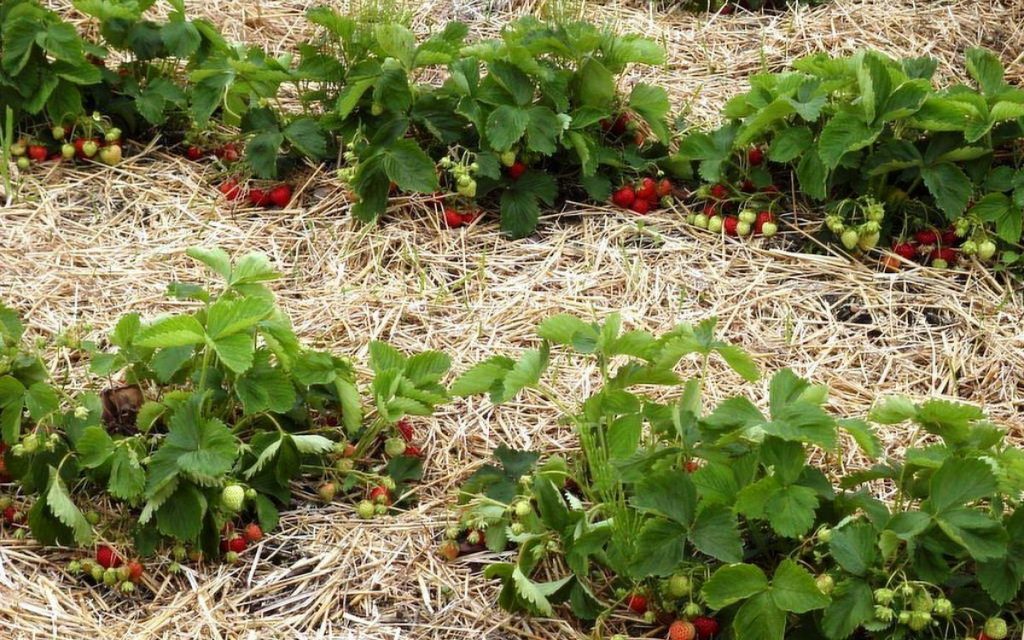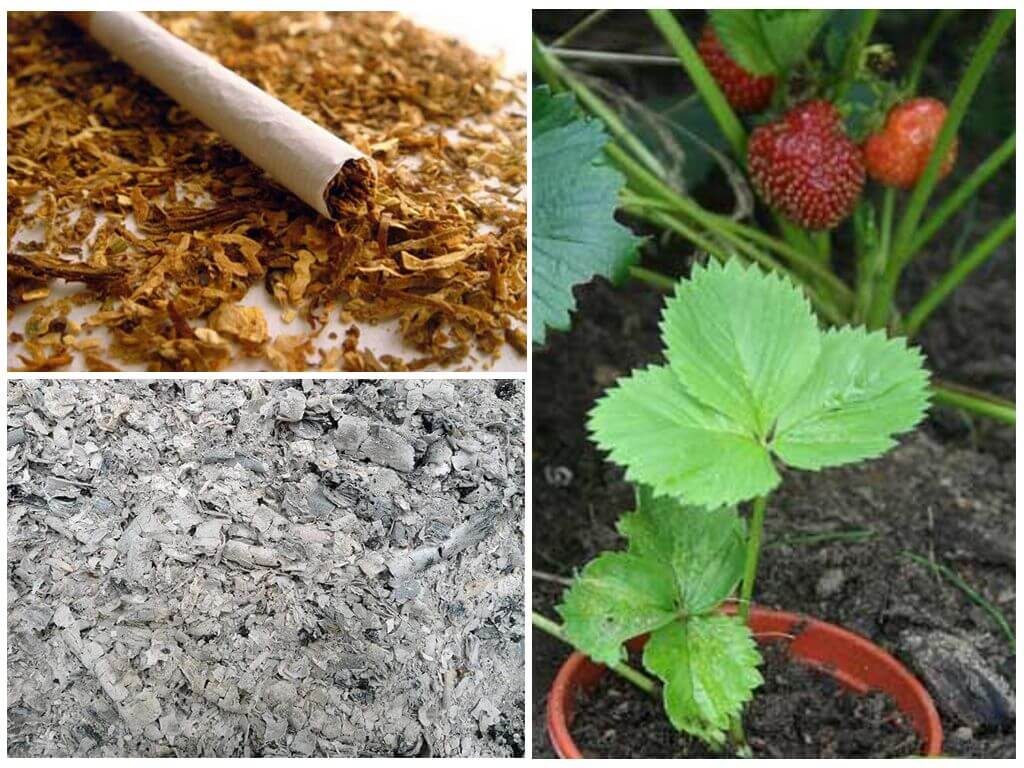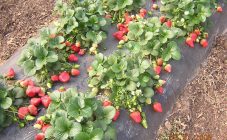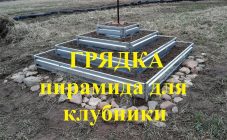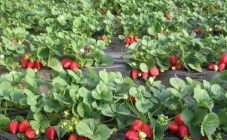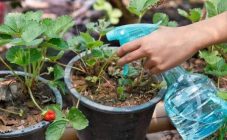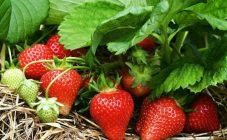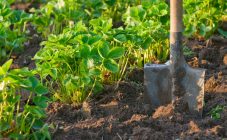Content:
Mulching of various crops is used to improve ventilation of the root system. This procedure helps plants to develop, relieves them of some dangers. At the same time, there is an increase in the yield of berry crops by an average of 15-20%.
General information
Mulch can be organic (for example, leaves, sawdust, shavings, pine needles, etc.) and inorganic (various artificial fabrics, films, gravel, loose pebbles). Components of the second type are used in modern farms. The first type of cover attracts various arthropod pests such as insects. In addition to them, slugs attack plants. Therefore, it is recommended to change the organic mulch periodically.
The second type of coatings does not attract garden parasites, but it is beneficial to use it only on large farms. Small household plots often have an uneven surface, which does not allow the normal use of film coverings.
Mulch should be poured onto the surface layer of soil between the stems of berry bushes. For this, a variety of methods are used. Summer residents add mulching components to the beds by hand, and large agricultural corporations use special machines for these purposes.
The main purpose of mulch is to retain moisture near the plant roots. In summer, the powder prevents overheating, and in winter it protects the berries from the cold. Erosion processes are reduced, the composition of the soil is improved.
Application for berry crops
Strawberry mulching is carried out 2 times during the entire growing season. First in the spring, when the first ovaries appear on the bushes. Treatment of plants allows you to prevent contact of peduncles with the ground. At the end of summer or after harvest, the mulch is harvested. The second time the procedure is carried out at the end of October. Mulching helps to eliminate freezing of berries in winter. When spring comes, everyone is removed from the beds.
The advantages of this processing:
- the intensity of watering decreases;
- the number of loosening is reduced;
- due to the decomposition of organic substances that make up the mulching layer, the soil fertility in the beds increases sharply;
- berries better resist the invasion of pests;
- improves the immunity of strawberries to rot;
- crop yield increases.
But mulching also has its drawbacks:
- the looseness of the soil increases, which attracts slugs and similar animals to planting;
- fungi that carry various diseases develop well when they get on the mulch-treated area.
An alternative to mulching strawberries will be the following methods used in summer cottages:
- Weed control by hilling berry bushes by hand or using herbicides. This method does not completely get rid of the pests.
- Increasing the intensity of loosening the beds. The procedure requires caution due to the close location of the roots of the hybrids to the surface of the earth.
- Increased watering during flowering and fruit development. Problems will arise when fluid stagnates under the berry bushes.
- We will have to cultivate the land 3 times per season with preparations that destroy fungi and soil bacteria. During the use of these funds, the dosage must be accurately observed.
There are many methods and materials for carrying out soil improvement work. The gardener, based on the available possibilities, decides how to mulch strawberries, what to use when processing the beds.
Most often, gardeners use hay or straw as mulch, as the most affordable materials in rural areas. Some of them cultivate the land with spunbond, paper or bark of various trees. Some summer residents use manure or humus, roofing material, sawdust. But keep in mind that most of these materials are suitable as mulch only in summer.
Winter makes more stringent requirements, therefore, insulating materials are used to preserve strawberry bushes. These include hay, straw and needles, and they are laid between the bushes in a thick layer directly on the ground.
A small part of gardeners who begin to grow berries are faced with a choice: what to use to get a good harvest, how and how to mulch strawberries. Experts recommend using readily available materials for this.
Sawdust
But some doubt whether it is possible to mulch strawberries with sawdust, whether this will lead to loss of harvest. Breeders and scientists claim that this is one of the best covering materials. Therefore, all doubts whether sawdust for strawberries is possible or not, it is worth resolutely sweeping aside and taking up mulching the soil. When using this material, the soil in the beds becomes loose and conducts air well. Therefore, even in extreme heat, crusts do not form on the ground, and the amount of loosening is reduced by 30-40%.
For strawberries or strawberries, sawdust from deciduous trees is used. They will rot faster and release the substances necessary for plants.
The soil in the area where mulching is carried out with sawdust should not be acidic. A neutral soil is selected, in extreme cases, a slightly alkaline earth. The neutralization of increased acidity is carried out by introducing wood ash, dolomite flour, eggshells under the plants.
The mulching process consists of the following steps:
- The weeds are weeded first. Remove old leaves, pebbles, and small debris. Then the beds are loosened to a depth of 30-50 mm.
- The soil should be covered with old newspapers (3 layers) so that they overlap each other. This will lock the mulch in place.
- Between the bushes, the berries should be covered with a layer of sawdust 30-50 mm thick. They should be free of mold, rot, and larvae of garden parasites.
If the gardener has fresh sawdust, then the mulch is prepared in this way:
- They choose a flat place on the site where the direct rays of the sun do not fall. Spread the polyethylene film, fixing the ends with stones. Pour 3 buckets of sawdust on top so that a layer of 100 mm is formed.
- Pour mulch with urea (200 ml) and 10 liters of water. Then the operations are repeated several times.
- To cover the resulting slide, use a film or fabric that does not allow air to pass through. After that, they wait about 2 weeks until the sawdust is completely matted.
The resulting mulch must be poured under the bushes of berries according to the method described above. Further care consists in adding sawdust and fertilizers. In the spring, during the flowering of plants, the soil is loosened, fresh soil, horse manure and nitrogen fertilizers are added to it.
In the summer, new sawdust is added. The layer thickness must be at least 40 mm. When fruiting begins, potash and phosphorus mixtures are introduced into the soil.
When autumn comes, it is recommended to mulch with a layer of 40-50 mm. This is necessary to protect the berries in winter. The plants are fed with compost or manure.
Grass
If there is no sawdust, then freshly cut grass is used. It contains rapidly decomposing ingredients that provide strawberries and strawberries with the necessary substances.
Before laying the mulching layer, the freshly cut grass is dried by removing plants with ripe seeds from it. A layer of mulch is laid under the strawberries or strawberries (with proper use, it is changed every 2 weeks) with a thickness of 30-50 to 70 mm, and it is not recommended to water the beds with water for a week.
Hay and straw
Mulching with hay and straw is carried out in the same way as for freshly cut grass. The difference is that these components can also be used to protect berries from winter cold. To do this, they are mixed with fallen leaves, and then spread between the bushes. The layer should be about 100 mm thick. The danger of using hay and straw is that fungi, bacteria, and various insects feed on them. Therefore, before using such mulch, it is recommended to treat it with drugs that destroy vectors of diseases and parasites.
Ash
Many novice gardeners are interested in whether it is possible to sprinkle ash on strawberries, and how to do it. This is done with the aim of destroying or repelling pests. The method is also suitable for feeding strawberries in spring, summer or autumn. Ash is placed under the stems in a layer 30-40 mm thick. Then the strawberry bush and the soil under it are watered with warm water.
Ash simultaneously with the ventilation of the soil eliminates the danger of attack by slugs and most of the insects. It can also be used as a fertilizer. But it is better to feed the bushes first with nitrogen (in spring) or phosphorus or potassium (in summer and autumn) mixtures.
What mulch to choose for strawberries
Often the gardener is lost from the variety of materials used for the procedure and asks the question, strawberry mulch, which is better, what to use in each case.
The best coating component is considered to be sawdust. But for the winter you will have to use coniferous needles or shavings, and the rest of the time it is advisable to use the remains of hardwood.
It is better to use black film or special fabric only in spring and summer, although some materials are able to protect plantings from the winter cold. They are stretched over the beds, and then incisions are made in those places where the trunks of the bushes pass. Previously, the beds are loosened, organic fertilizers are applied to them. The film is lowered onto the ground. Fix its lateral edges with stones.
The packaging cardboard is cut in such a way that it overlaps the entire width of the bed plus 10 cm on each side. A groove is made along the perimeter of the sheet, where the left "wings" of the package are brought. The cardboard is covered with a layer of earth of 100 mm. It is not recommended to moisten such mulch, otherwise the material will get wet. Leave the workpiece for 8-10 days. After that, berry sprouts are planted in the ground on cardboard. Which are sprayed with a pear. When the seedlings grow up, it is advisable to overlay them with hay or straw.
When mulching in spring with needles (needles), bark or cones, it is possible to scare away various insects and slugs from planting. A layer of mulch is made at least 40 mm thick. If this process takes place in the fall, then in winter the strawberries will be protected from the cold.
Mulching strawberries with cut grass is beneficial only in summer due to the fact that they will rot before winter. It is recommended to use hay and straw in winter to protect strawberries from cold weather.
The use of film, cardboard (paper), spunbond is not always possible due to the unevenness of the site, in addition, due to poor air circulation, their use causes the gradual death of the root system of the berries. Condensation remains on the fabric or film in spring, damaging the berries.
Wood ash, like mulch for strawberries, is convenient because, by ventilating the soil, it destroys garden pests and fertilizes the soil. But it cannot eliminate fungi and bacteria living in the soil.
Recommendations for beginners
Mulching is an important component of agricultural activities. It allows you to reduce the cost of watering, weed control, garden pests and various diseases.
For inexperienced farmers, the best strawberry mulch is sawdust or ash. But beginners often make the following mistakes:
- Select and apply the film on poor soils. In this case, they forget to remove the rhizomes. As a result, the entire crop perishes. This is due to the spread of weeds and fungal infections.
- Large amounts of fertilizer are used together with a mulch layer. This leads to a rapid depletion of the land after the first bountiful harvest.
- Do not carry out preventive measures for hilling bushes, watering strawberries and strawberries after mulching. As a result, yield drops.
- Do not respect the thickness of the mulch layer. This leads to rapid evaporation of moisture.
To get the desired result, you need to not only follow the advice of breeders, but also carefully monitor the development of plants. We need timely watering, weeding, spraying of bushes from various diseases and garden pests. Choosing the right mulching method is a guarantee of a high yield.
